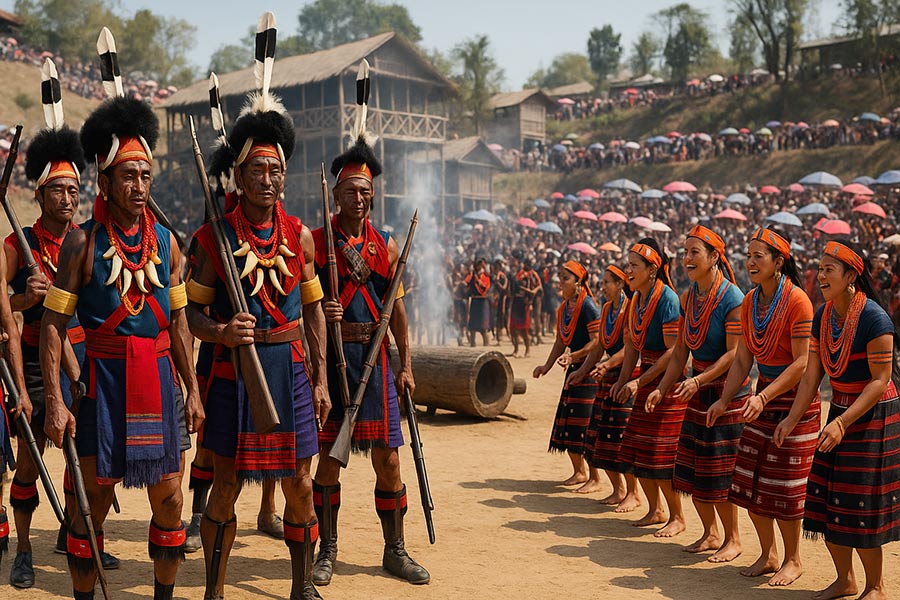
Konyak Aoling Festival (2nd – 3th April)
The Aoling Festival is the most vibrant and culturally significant celebration of the Konyak Naga people, held annually in the first week of April across the Mon district in Nagaland, with peak celebrations taking place around April 2nd and 3rd. This ancestral festival marks the arrival of spring and the beginning of the Konyak New Year, traditionally coinciding with the completion of sowing in the jhum (slash-and-burn) fields.
Aoling is both a spiritual and social event, rooted in rituals that seek blessings for a bountiful harvest, protection, and prosperity for the year ahead. In days past, the festival also celebrated headhunting victories, and although such practices ended decades ago, the fierce pride, warrior spirit, and ancestral traditions still form the heart of the celebration.
At the start of the festival, families perform ceremonial rites to honor divine spirits and ancestors. Sacred animal sacrifices, brewing of rice beer, and preparation of traditional dishes mark the beginning of communal joy. Villagers dress in stunning ceremonial attire—vivid costumes, elaborate feathered headgear, face tattoos, ivory armlets, and symbolic weaponry—each piece telling a story of valor, lineage, or tribal identity.
The celebration reaches its climax with spectacular displays of Konyak culture: synchronized war dances, thunderous drumbeats, traditional songs, and theatrical performances reenacting epic tales. Every village transforms into a living museum of heritage, and the sense of pride and unity is palpable.
Beyond its dramatic visual appeal, the Aoling Festival is an exceptional opportunity for cultural immersion—offering a rare glimpse into the spirit of a community deeply connected to its land, history, and ancestral code. For travelers, it is one of the most powerful windows into the tribal soul of Northeast India, raw and untouched by the tides of modernity.

